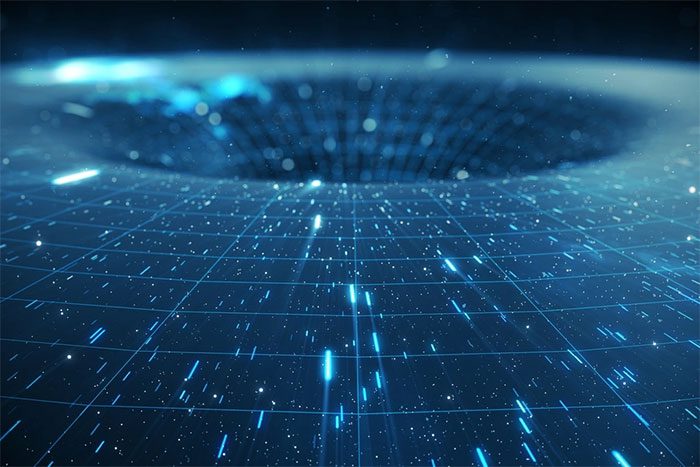Gravity is a force that is present everywhere, shaping our daily experiences, keeping humans anchored to Earth, and governing the motion of planets in space.
So why are we pulled down by this fundamental force rather than pushed up?
A Four-Dimensional Network

We live in an invisible network that envelops our universe. (Illustration: Science Post).
Gravity is described by the theory of General Relativity, developed by scientist Albert Einstein, based on his profound understanding of space-time, an invisible network surrounding our universe.
To visualize this complex idea, imagine space-time as a four-dimensional entity that combines three dimensions of space (length, width, and height) with the fourth dimension being time.
Einstein revolutionized our understanding of gravity by indicating that massive objects, such as Earth, not only attract other objects towards them as previously thought, but also curve the space-time around them.
Mass Creates a “Gravitational Well”
To simplify this concept, imagine standing in front of a trampoline. If you place an object, like a ball, in the center of the trampoline, it creates a distortion around it, known as an “gravitational well.”
If you place a smaller ball onto the trampoline, it will naturally roll toward the larger ball in the center. This two-dimensional analogy reflects how mass distorts space-time, creating gravitational pull.
The greater the mass of an object, the more pronounced the curvature of space-time becomes. For example, the Sun creates a greater curvature than Earth due to its larger mass.

Earth and the Sun on distorted space-time. (Illustration; SC).
Thus, our planet is not pulled toward its geometric center but is drawn toward the bottom of the “gravitational well” created by its presence in space-time.
Why Doesn’t Earth Roll Toward the Sun?
Our planet does not roll toward the Sun thanks to the delicate balance between the gravitational pull from the fiery sphere and the Earth’s orbital speed around it.
This is akin to a form of intricate dance between the gravity pulling Earth toward the Sun and the centrifugal force generated by Earth’s orbital motion.
Indeed, Earth is continuously falling toward the Sun due to gravity, but its orbital speed allows the planet to maintain a state of equilibrium, preventing a direct roll toward the Sun.
The combination of gravitational force and orbital velocity creates a stable orbital motion that keeps Earth in orbit around the Sun. The same phenomenon occurs between Earth and the Moon.
As a result, General Relativity provides a unified explanation of gravity by linking mass, energy, and the shape of space-time.
This revolutionary perspective allows us to understand why objects in the universe attract one another and offers insights into how physical reality operates on a cosmic scale.


















































